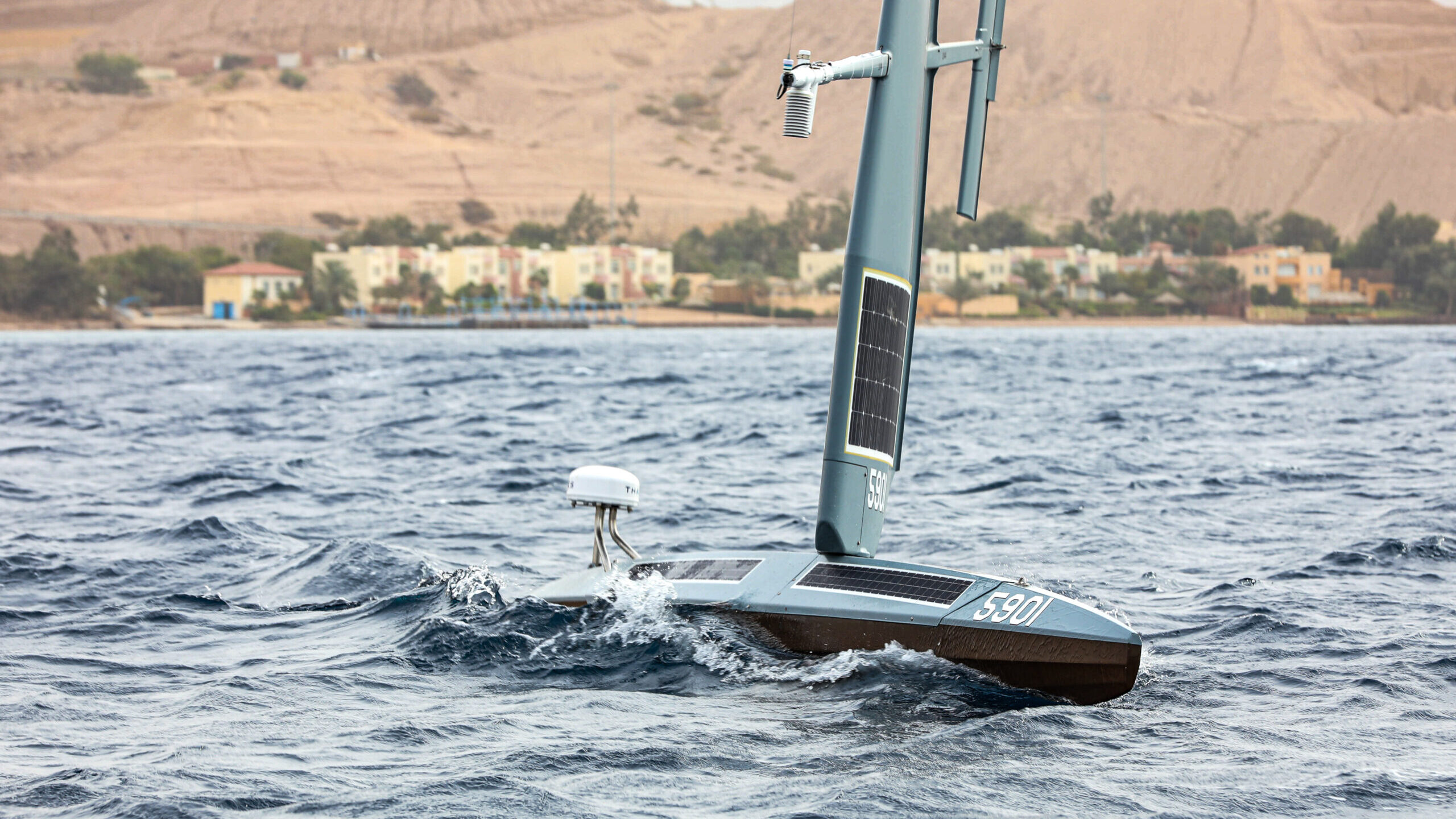
A Saildrone Explorer unmanned surface vessel (USV) sails in the Gulf of Aqaba off of Jordan’s coast, Dec. 12, during exercise Digital Horizon. (U.S. Army photo by Cpl. Deandre Dawkins)
WEST 2022: The Navy’s Unmanned Task Force has been pursuing seven classified “spirals” aimed at taking specific technologies from industry vendors and putting them through a series of problem sets to determine their value to the future fleet, according to the chief of naval operations.
“We’re taking a look at problem sets like payload integration on larger unmanned [systems], reliability with respect to engineering plans or flight controls on other unmanned” vehicles, Adm. Michael Gilday told a small group of reporters on Wednesday during the West 2022 conference in San Diego.
Gilday added that many of the technologies the group has spent the past three months testing have also been incorporated into the International Maritime Exercise being held in the Middle East this month.
The eventual aim, Gilday said, is to take an “evolutionary approach” where the service introduces smaller, less sophisticated unmanned platforms into the fleet in the near term, but be ready to scale up in the next decade.
“We’re really focused on taking a more evolutionary approach. I think the Unmanned Task Force is helping us do that inside the FYDP,” he said. “In the long run, the goal is … to put ourselves in a position where we can scale those platforms and into the 2030s have unmanned in larger numbers available to the commanders.”
FYDP stands for “future years defense program,” or the five-year period around which the Pentagon plans it budgets.
Gilday’s remarks are the latest reflection of the Navy’s ambitions to field unmanned platforms, which has been a well publicized priority for several years now. But the top admiral also seems to be signaling the Navy will take a more constrained approach than the “all-in” budget requests that have sparked lawmakers’ concerns in the past.
Although the specific technologies and problem sets being examined remain classified, the admiral’s comments did shed light on the ground-level work being done by the panel. Composed of requirements officials, acquisition professionals, industry executives and fleet representatives, Gilday said the group’s purpose is to help guide the Navy’s choices in the near term.
Gilday stood up the service-wide task force in September 2021 around the same time a similar-but-smaller Navy panel was assembled in the Middle East, dubbed Task Force 59. At the time, the Navy’s top admiral did not offer much detail on the UTF except to say that it will bring together experts to answer the Navy’s questions on unmanned.
Gilday said given the development of the Navy and Marine Corps’ collection of warfighting strategies, such as Distributed Maritime Operations, the service has “a very good understanding of how conceptually we’re going to fight in the future.”
“That’s now informing what we’re going to fight with,” he said.
Separately the CNO also said the chief of naval personnel is strongly considering a new unmanned rating. (Ratings are the military’s system of qualifications used to classify specific skills enlisted servicemen possess.) Currently, the service is pulling sailors out of conventional ratings and tapping them to operate certain unmanned vehicles, but ideally these operators would have their own rating, Gilday said.
“What we want to do is create a highly specialized force and … [they] can also have a degree of expertise with respect to helping us build or modify applications that will control these platforms,” he said.






















